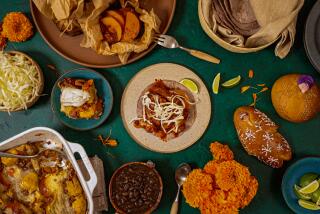Celebrations of Life
- Share via
Touched by the eulogies heard at the funeral of a Brandeis University colleague, Morrie Schwartz, the dying central character in the nonfiction book, “Tuesdays with Morrie,” determines that he wants to savor tributes to him while he is still alive. He organizes his own pre-funeral funeral.
Traditional Hawaiians do something similar. When possible, prior to death, they may hold a celebration of life with the dying person present to hear the acclaim that will be paid after death. At the funeral, mourners commonly wear subdued colors in either aloha wear (floral prints) or Western garb. Following the funeral, they hold a memorial feast that resembles a luau. The event is joyous, not somber, because they believe the deceased has joined his ancestors.
Post-funeral foods differ significantly. Sephardic Jews call their meal the huevo (egg), where each person eats a hard-boiled egg to symbolize the circle of life. The meal includes kashkaval cheese, Greek olives and bread. After a blessing they conclude by eating raisins for sweetness to compensate for the bitterness of the loss.
Among Armenians, after a person dies, the family gathers to drink bitter coffee, which they take again after the funeral. Subsequently, they eat shish kebab, rice and chicken. While Chinese mourners gather to eat a meal at a Chinese restaurant after the funeral, Muslims meet afterward at a home or in a hall where they serve tea, coffee and a special sweet called halvah.
More to Read
Sign up for our Book Club newsletter
Get the latest news, events and more from the Los Angeles Times Book Club, and help us get L.A. reading and talking.
You may occasionally receive promotional content from the Los Angeles Times.










